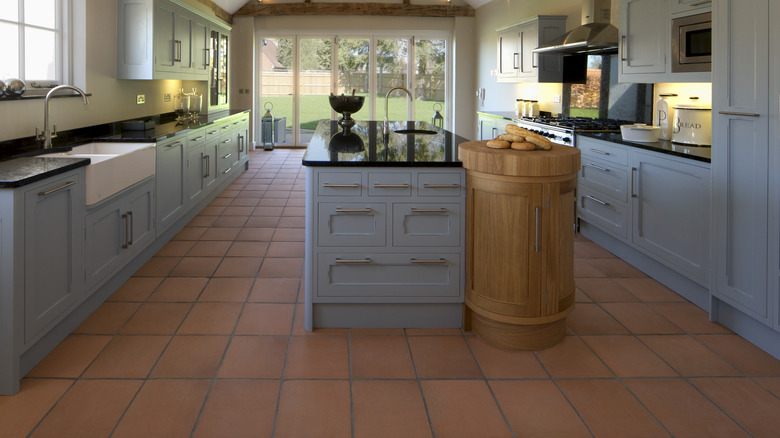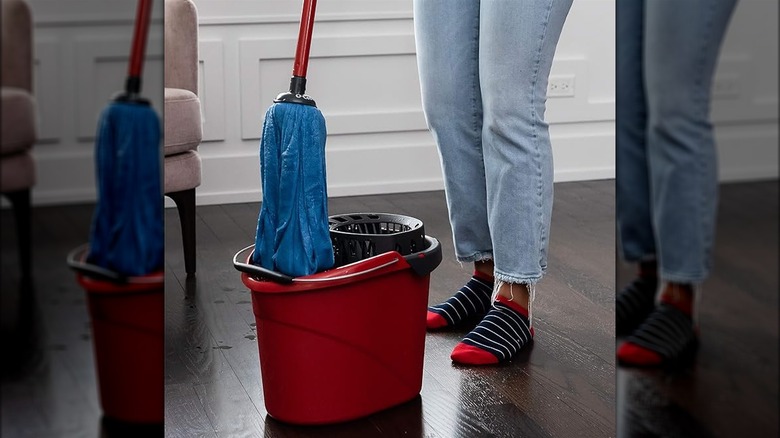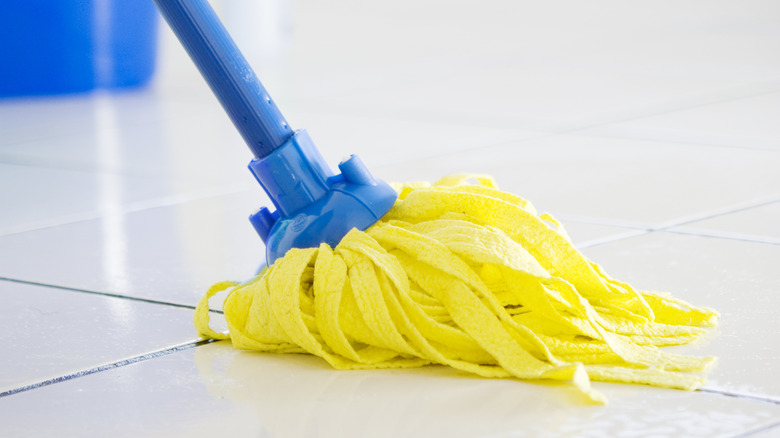The Best Type Of Mop For Cleaning Tile Floors Without Leaving Any Scratches
We may receive a commission on purchases made from links.
If you have tile floors in your home, you are likely familiar with their many benefits. They can last over 20 years before they need to be replaced, so they are incredibly durable. Sealed tile floors are also water-resistant, making them a popular flooring pick for bathrooms and kitchens. It's even easy to clean and maintain as long as you use the right tools, and microfiber mops will allow you to clean your tile floors without leaving scratches.
The gentle microfiber material is not abrasive enough to cause harm to tile floors. It is not a good idea to use harsh scrubbing tools on tile floors because they can easily cause damage. You should also avoid using sponge roller mops or floor cleaning wipers on tile floors because they can push dirt and grime into grout, making it difficult to remove. When browsing through microfiber mops to use on your tile, opt for a chamois mop (also known as a sting or strip mop), as it is less likely to leave dirt stuck in your grout. Overall, microfiber is the safest material to use on tile because it can reduce the risk of scratches that may lead to frustratingly costly repairs.
Microfiber mops will clean tile safely
Gentle mircofiber mops will clean tile safely and without any damage, unlike other harsh tools. Even with microfiber mops, however, you must still take one precaution to protect your floors. Use a wringer bucket so that the mop does not soak your floor. Leaving standing water on tile can cause the liquid to make its way into your grout, under your tile, and onto your subfloor, leading to mold damage over time. If you choose to purchase a new microfiber mop to use on your floors, consider buying a wringer bucket to pair with it as well.
The O-Cedar Microfiber Wet Cloth Mop sold by Home Depot checks all of the boxes of a mop that will not leave any scratches on tile floors. The microfiber mop head is not abrasive and is easily maneuverable. It is also machine washable, making it easy to keep your mop clean. The manufacturer recommends pairing the mop with the O-Cedar QuickWring Mop Bucket. The mop is priced at $9.97, and the bucket is priced at $10.97. You can also find microfiber mops and buckets on Amazon. The website sells a microfiber mop with two mop heads for $13.97, and a separate CLEANHOME Collapsible Mop Bucket for $32.99
How to clean tile floors with a microfiber mop
Now that you have an idea of what microfiber mops are on the market and the precautions to take when using them, let's take a look at how you should really be cleaning your tile floors. Using a microfiber chamois mop is an important first step. This ensures that your floors are cleaned without pushing dirt into the grout and that you do not scratch your tile in the process. Regardless of the type of tile installed in your home, start out by sweeping away any dirt or debris.
For ceramic tile, create a cleaning solution using warm water and a small amount of mild dish soap. Wash the floors using your microfiber mop and wringer bucket until they are clean. Clean up the soapy residue with a mop dipped only in water. Allow the tile to air dry. You may clean the grout separately with a vinegar and water solution if needed. If you have porcelain tile floors, you will need to create a solution using a bucket of hot water and one cup of white vinegar, to dip your mop in. After you have cleaned your floors, dip your mop in plain, clean water to remove any vinegar residue. Allow all of your tile to air dry. You may use a toothbrush and baking soda to get rid of grime and dirt that may be trapped in your grout.



